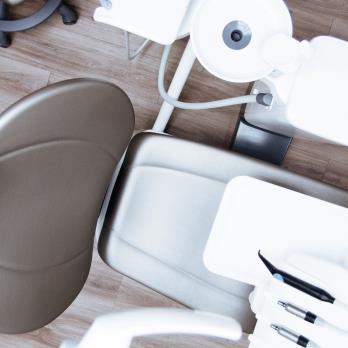The Next Generation of Dental Implants: Seamless Solutions
If you’ve been thinking about dental implants but hesitated due to traditional methods, new screw-free solutions are opening the door to a different experience. These modern implants are designed for comfort, precision, and a natural look, making dental restoration more approachable than ever

How Has Dental Implant Technology Advanced Over Recent Years?
The evolution of dental implant technology has been marked by significant breakthroughs in materials science, surgical protocols, and digital integration. Traditional titanium implants have been enhanced with specialized surface treatments that promote faster osseointegration, while newer zirconia alternatives offer metal-free solutions for patients with specific aesthetic or biocompatibility concerns. Digital imaging technologies, including cone beam CT scans and intraoral scanners, now enable precise treatment planning and virtual implant placement before surgery begins.
Computer-aided design and manufacturing have revolutionized implant components, allowing for custom abutments and crowns that perfectly match each patient’s unique anatomy. These technological improvements have reduced treatment times, minimized surgical invasiveness, and improved the predictability of successful outcomes across diverse patient populations.
What Makes Screw-Free Implant Design Advantageous?
Benefits of screw-free implant design represent a significant advancement in addressing common complications associated with traditional implant restorations. Conventional implant crowns typically rely on small screws to secure the restoration to the implant, which can sometimes loosen, fracture, or create access holes that compromise aesthetics. Modern cement-retained and friction-fit designs eliminate these mechanical vulnerabilities while providing superior seal integrity.
Screw-free systems often feature improved emergence profiles that better mimic natural tooth anatomy, creating more harmonious gingival contours and enhanced aesthetic outcomes. These designs also simplify the restoration process for dental professionals, reducing chair time and technical complexity while maintaining the retrievability needed for future maintenance when designed with appropriate protocols.
How Do Modern Techniques Enhance Patient Experience?
Comfort and precision in modern dentistry have been revolutionized through minimally invasive surgical approaches and enhanced pain management protocols. Guided implant surgery utilizes 3D-printed surgical templates that allow for flapless procedures in many cases, significantly reducing post-operative discomfort and healing time. Local anesthesia techniques have evolved to provide more effective numbing with longer duration, while conscious sedation options help anxious patients feel relaxed throughout treatment.
Digital workflow integration means fewer appointments are needed, as same-day temporary restorations are increasingly possible through in-office milling capabilities. Real-time monitoring during surgery using digital tools ensures optimal implant positioning, while advanced bone grafting materials and techniques expand treatment possibilities for patients who previously may not have been candidates for implants.
What Factors Influence Treatment Accessibility?
Accessibility of advanced dental restoration has improved through various technological and procedural innovations that have streamlined treatment delivery. Immediate load protocols allow patients to receive temporary teeth on the same day as implant placement in appropriate cases, eliminating the traditional waiting period that could last several months. Clear treatment timelines and improved predictability help patients better plan for their restoration journey.
Training programs for dental professionals have expanded access to advanced implant techniques across more geographic regions, while teledentistry consultations can connect patients with specialists regardless of location. Insurance coverage for implant treatment has gradually improved as success rates have been documented over decades of clinical research, though coverage varies significantly between providers and plans.
What Can Patients Expect for Long-Term Success?
Long-term outcomes of innovative implant solutions demonstrate exceptional durability when proper protocols are followed during treatment and maintenance phases. Clinical studies spanning 20-30 years show success rates exceeding 95% for properly placed and maintained dental implants, making them one of the most predictable treatments in dentistry. Modern implant surfaces and designs promote superior bone integration, while improved understanding of peri-implant tissue health has led to better maintenance protocols.
Factors contributing to long-term success include appropriate case selection, precise surgical placement, proper restoration design, and consistent professional maintenance combined with excellent home care. Regular monitoring allows for early intervention if complications arise, while the modular design of implant systems enables component replacement without implant removal in most cases requiring future service.
| Treatment Type | Provider Example | Average Cost Range |
|---|---|---|
| Single Tooth Implant | Aspen Dental | $3,000 - $5,000 |
| Multiple Implants | ClearChoice | $15,000 - $30,000 |
| All-on-4 Full Arch | Affordable Dentures | $15,000 - $25,000 |
| Same-Day Implants | Smile Generation | $4,000 - $6,000 |
Prices, rates, or cost estimates mentioned in this article are based on the latest available information but may change over time. Independent research is advised before making financial decisions.
The next generation of dental implants represents a convergence of advanced materials, refined techniques, and digital precision that has transformed tooth replacement from a complex, unpredictable procedure into a streamlined, highly successful treatment option. As technology continues advancing, patients can expect even greater comfort, faster treatment times, and more predictable outcomes. These innovations have made quality dental restoration accessible to more patients than ever before, with long-term success rates that justify the investment in oral health and quality of life.
This article is for informational purposes only and should not be considered medical advice. Please consult a qualified healthcare professional for personalized guidance and treatment.




